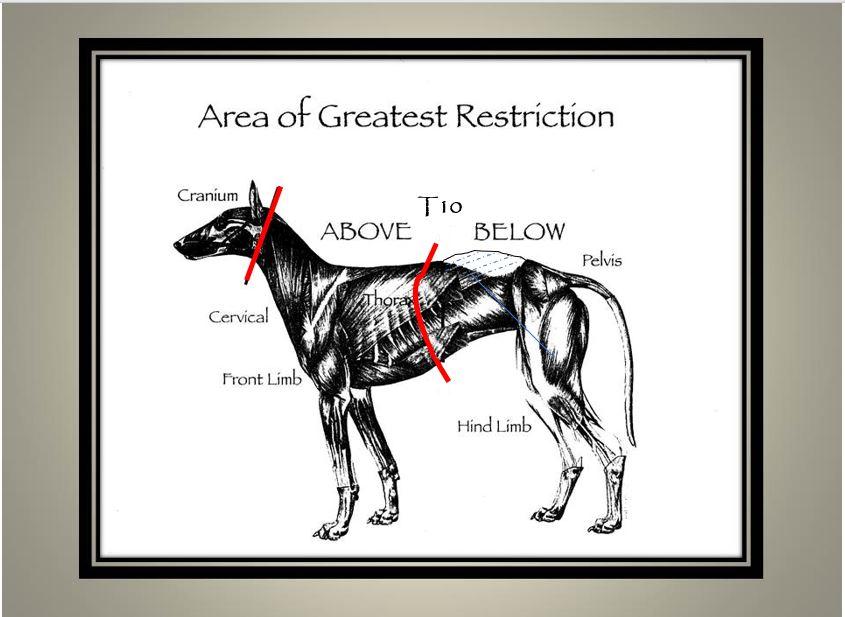

Where do we start to resolve the mystery of confusing symptoms? If we start with the observation of the animal’s gait, then followed with functional testing, we can provide some insights into the dysfunctional mechanics. Often the symptoms drive the diagnosis, but also may lead us down
the wrong path.
We divide the body into three gross sections and in manual therapy we decide in which section is the AREA OF GREATEST RESTRICTION (AGR) located:
I. Cranium (includes all parts of the head)
II. Above the diaphragm (includes the neck, thorax, and front legs)
III. Below the diaphragm (includes the abdomen, lumbo-pelvis, and hind legs)
The AGR is the area where the greatest somatic dysfunction is located that also has the most influence on other systems. Once you have determined which of the three gross areas contains the AGR, then you progressively work layer by layer from the most to least important restrictions within that area. This is called SEQUENCING.
For example, if you have determined the AGR is in the below the diaphragm area, you will have to examine the spine, the pelvis, and the extremities for normal joint play. This allows you to pinpoint the AGR in order to begin appropriate treatment.
The most important skill in determining the location of the problem is manual testing of the normal and restricted joints in the dog. The definition of a “healthy” joint is a normal “glide/slide” in the joint capsule. This will be a “springy” end feel when testing the end range of the joint.
A dysfunctional joint is a restricted, stiff joint because of a loss of glide/slide and the muscles/tissues feel tense (spasms). Understanding the mechanics of each joint helps determine what is normal quality and quantity of the particular joint movement.
In osteopathy one must remember that “PAIN is the biggest LIAR!” Treating the symptoms often will not resolve the core problem. But, by determining where the AGR is and treating in the appropriate sequence, you can address the core issues of the animal.
